Environmental issues, such as plastic waste, are of increasing concern globally, and understanding local perspectives is vital for effective solutions. SIXT.VN is committed to sustainable tourism in Vietnam, so let’s explore the viewpoints and initiatives surrounding plastic waste management and other environmental challenges in Vietnam. Discover how you can contribute to responsible travel with eco-friendly practices.
1. What Are the Main Environmental Concerns in Vietnam?
Vietnam faces a range of environmental issues, with plastic waste being a particularly pressing concern. The country’s rapid economic growth and urbanization have led to increased waste generation, straining existing waste management infrastructure. According to a report by the World Bank in 2022, Vietnam generates approximately 1.8 million tons of plastic waste annually, a significant portion of which ends up in the ocean. Other key environmental concerns include air pollution, water contamination, deforestation, and biodiversity loss. These challenges are interconnected, impacting both the natural environment and the health and livelihoods of local communities.
1.1. How Does Air Pollution Impact Vietnam?
Air pollution, primarily from industrial activities, transportation, and agricultural practices, poses a significant threat to public health and environmental sustainability in Vietnam. Major cities like Hanoi and Ho Chi Minh City often experience high levels of particulate matter (PM2.5 and PM10) and other pollutants, exceeding World Health Organization (WHO) guidelines. A study by the Ministry of Natural Resources and Environment in 2023 indicated that air pollution contributes to thousands of premature deaths annually and increases the incidence of respiratory illnesses. The economic costs associated with air pollution, including healthcare expenses and lost productivity, are substantial. Addressing air pollution requires a multi-faceted approach, including stricter emission standards, investments in public transportation, and promoting cleaner energy sources.
1.2. What Are the Sources of Water Contamination in Vietnam?
Water contamination, driven by industrial discharge, agricultural runoff, and inadequate wastewater treatment, is a critical environmental issue in Vietnam. Many rivers and canals are heavily polluted, posing risks to human health and aquatic ecosystems. A report by the Vietnam Environment Administration in 2021 revealed that a significant percentage of surface water samples failed to meet national quality standards. Contaminated water sources can lead to waterborne diseases, impacting vulnerable populations, especially in rural areas. Effective water management strategies, including improved wastewater treatment infrastructure, regulation of industrial discharge, and promoting sustainable agricultural practices, are essential for protecting water resources.
1.3. How Does Deforestation Affect Vietnam’s Environment?
Deforestation, driven by illegal logging, agricultural expansion, and infrastructure development, has profound environmental consequences in Vietnam. Forests play a vital role in regulating water cycles, preventing soil erosion, and conserving biodiversity. A study by the Food and Agriculture Organization (FAO) in 2020 highlighted that Vietnam has experienced significant forest loss in recent decades, impacting both the environment and local communities that depend on forest resources. Reforestation efforts and sustainable forest management practices are crucial for restoring degraded ecosystems and mitigating the impacts of deforestation.
1.4. What Is the Status of Biodiversity Loss in Vietnam?
Biodiversity loss, driven by habitat destruction, overexploitation, and climate change, is a growing concern in Vietnam. The country is home to a rich array of plant and animal species, many of which are endemic and threatened. A report by the International Union for Conservation of Nature (IUCN) in 2022 indicated that numerous species in Vietnam are at risk of extinction due to habitat loss and poaching. Conservation efforts, including protected area management, species recovery programs, and combating wildlife trafficking, are essential for safeguarding Vietnam’s biodiversity.
 Plastic waste in Vietnam's environment highlighting the urgent need for better waste management and recycling programs
Plastic waste in Vietnam's environment highlighting the urgent need for better waste management and recycling programs
2. What Are the Local Views on Plastic Waste in Vietnam?
Vietnamese people generally recognize the severity of the plastic waste problem. Many are concerned about the visible pollution in urban and rural areas, as well as the potential impacts on human health and the environment. A survey conducted by the Institute of Strategy and Policy on Natural Resources and Environment in 2023 found that the majority of respondents expressed concern about plastic waste and supported measures to reduce its use and improve waste management. However, awareness levels and attitudes vary across different demographic groups, with younger generations and urban residents tending to be more environmentally conscious.
2.1. How Aware Are Vietnamese Citizens of the Impact of Plastic Waste?
Awareness of the impact of plastic waste is growing in Vietnam, driven by media campaigns, educational programs, and community initiatives. Many Vietnamese citizens are now aware of the detrimental effects of plastic pollution on marine ecosystems, human health, and the environment. However, there are still gaps in knowledge, particularly regarding the specific types of plastics and their associated risks. Continued efforts to raise awareness and provide practical information on reducing plastic consumption and improving waste management are crucial for fostering environmentally responsible behavior.
2.2. What Concerns Do Vietnamese People Have About Plastic Pollution?
Vietnamese people express a range of concerns about plastic pollution, including its impact on the beauty of natural landscapes, the health of marine life, and the safety of food and water sources. Many are worried about the visible accumulation of plastic waste in rivers, beaches, and urban areas. The potential health risks associated with microplastics in food and water are also a growing concern. Addressing these concerns requires comprehensive solutions that tackle plastic waste at its source, improve waste collection and recycling systems, and promote sustainable consumption patterns.
2.3. How Do Attitudes Towards Plastic Waste Vary Across Different Groups in Vietnam?
Attitudes towards plastic waste vary across different demographic groups in Vietnam, influenced by factors such as age, education, and location. Younger generations and urban residents tend to be more environmentally conscious and supportive of measures to reduce plastic consumption. However, older generations and rural residents may have different priorities and face practical challenges in adopting sustainable practices. Understanding these variations is essential for tailoring effective communication strategies and policy interventions that resonate with diverse communities.
2.4. What Kind of Support Exists for Policies Aimed at Reducing Plastic Waste?
There is growing support for policies aimed at reducing plastic waste in Vietnam, both from the public and the government. Many Vietnamese citizens recognize the need for stricter regulations on plastic production and consumption, as well as investments in waste management infrastructure. The government has implemented several policies to address plastic pollution, including bans on certain types of single-use plastics and incentives for recycling. Continued collaboration between the government, businesses, and communities is essential for developing and implementing effective policies that promote a circular economy for plastics.
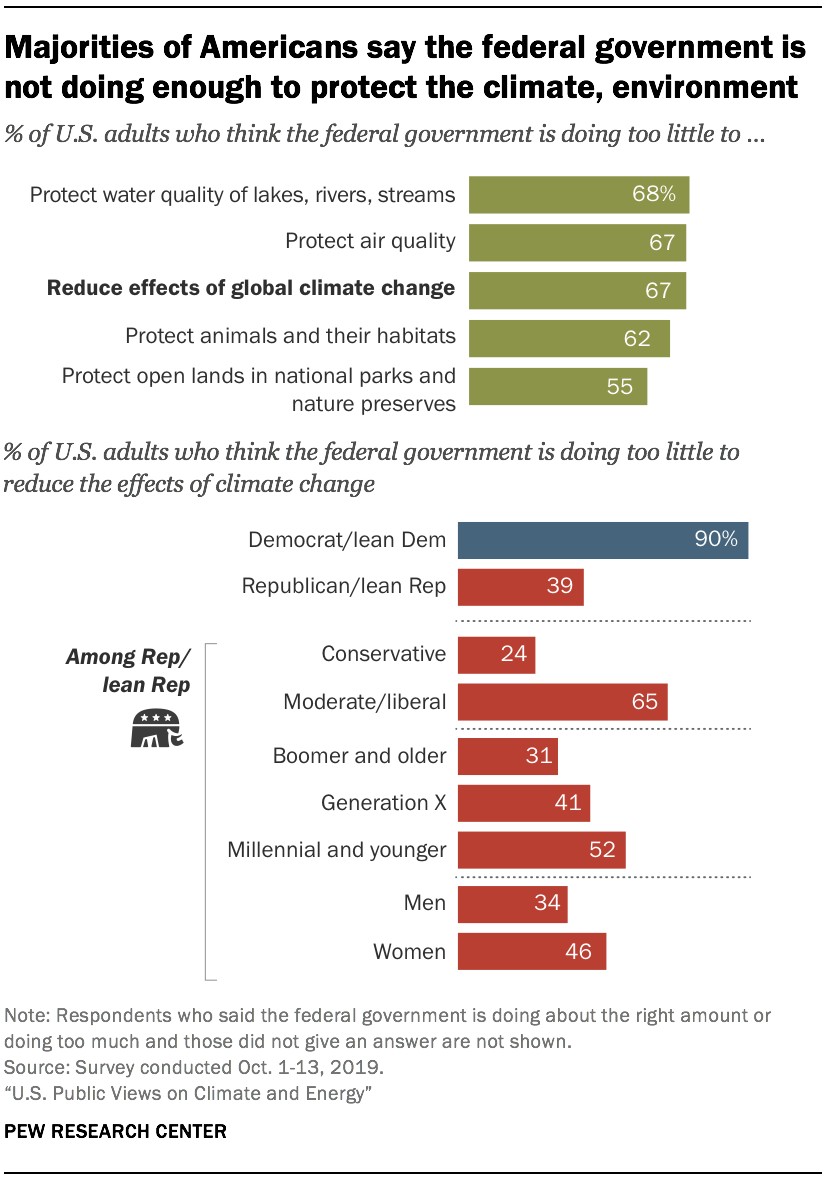 Vietnamese locals cleaning up a beach, demonstrating community involvement in addressing plastic waste
Vietnamese locals cleaning up a beach, demonstrating community involvement in addressing plastic waste
3. What Initiatives Are in Place to Tackle Plastic Waste in Vietnam?
Various initiatives are underway in Vietnam to address the plastic waste challenge. These include government regulations, private sector efforts, and community-based projects. The government has implemented policies to restrict the production and use of certain single-use plastics, promote recycling, and improve waste collection and treatment systems. Private sector companies are developing innovative solutions for plastic recycling and alternative materials. Community-based initiatives, such as beach cleanups and waste segregation programs, are also playing a vital role in raising awareness and promoting responsible waste management practices.
3.1. What Are the Key Government Regulations Regarding Plastic Waste in Vietnam?
The Vietnamese government has implemented several key regulations to address plastic waste, including:
- National Strategy on Integrated Solid Waste Management to 2025, with a Vision to 2050: This strategy sets targets for reducing waste generation, increasing recycling rates, and improving waste treatment technologies.
- Decree No. 08/2022/ND-CP: This decree provides detailed regulations on waste management, including specific provisions for plastic waste.
- Prime Minister’s Decision No. 1745/QD-TTg: This decision approves a project on strengthening plastic waste management in Vietnam for the period 2021-2025.
These regulations aim to create a legal framework for promoting sustainable waste management practices and reducing plastic pollution.
3.2. What Role Do Private Sector Companies Play in Reducing Plastic Waste?
Private sector companies are playing an increasingly important role in reducing plastic waste in Vietnam. Many companies are investing in innovative solutions for plastic recycling, developing alternative materials, and promoting sustainable packaging. For example, some companies are using recycled plastic to produce new products, while others are developing biodegradable packaging materials. Collaboration between the government and the private sector is essential for scaling up these solutions and creating a circular economy for plastics.
3.3. What Community-Based Initiatives Are Addressing Plastic Waste in Vietnam?
Community-based initiatives are making a significant contribution to addressing plastic waste in Vietnam. These initiatives include:
- Beach cleanups: Volunteers organize regular beach cleanups to remove plastic waste and raise awareness about marine pollution.
- Waste segregation programs: Communities implement waste segregation programs to separate recyclable materials from general waste.
- Educational programs: Local organizations conduct educational programs to promote responsible waste management practices.
These initiatives empower communities to take action and contribute to a cleaner and healthier environment.
3.4. How Effective Are These Initiatives in Reducing Plastic Waste?
The effectiveness of these initiatives in reducing plastic waste varies depending on the specific context and the level of implementation. Government regulations provide a necessary framework for promoting sustainable waste management practices, but their effectiveness depends on enforcement and compliance. Private sector initiatives can drive innovation and provide solutions for plastic recycling and alternative materials, but their impact is limited by market demand and scalability. Community-based initiatives can raise awareness and promote responsible waste management practices, but their impact depends on sustained engagement and resources. A comprehensive approach that integrates these different types of initiatives is essential for achieving significant reductions in plastic waste.
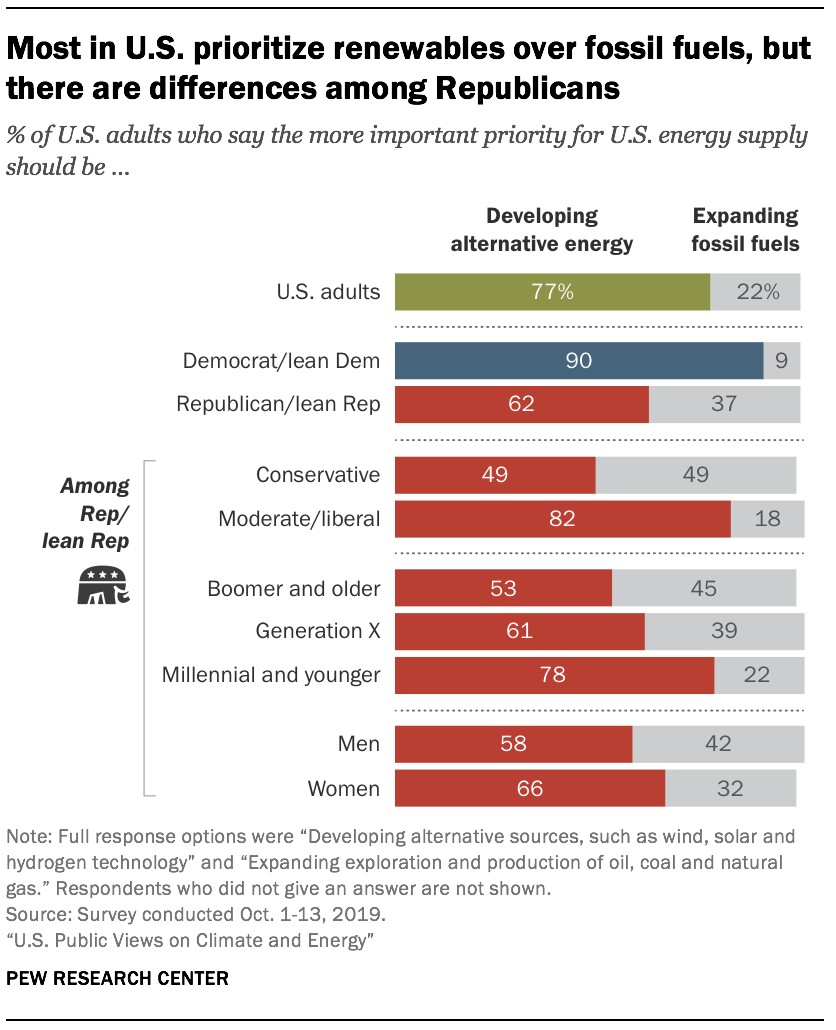 A local Vietnamese market with vendors using reusable packaging, showcasing sustainable practices in daily life
A local Vietnamese market with vendors using reusable packaging, showcasing sustainable practices in daily life
4. How Does Plastic Waste Impact Tourism in Vietnam?
Plastic waste poses a significant threat to the tourism industry in Vietnam. The accumulation of plastic waste on beaches, in natural parks, and in urban areas detracts from the beauty of the country and can deter tourists. Marine pollution from plastic waste can harm marine life and impact activities such as diving and snorkeling. Addressing plastic waste is therefore essential for maintaining the attractiveness and sustainability of Vietnam as a tourist destination.
4.1. How Does Plastic Pollution Affect Vietnam’s Reputation as a Tourist Destination?
Plastic pollution can damage Vietnam’s reputation as a tourist destination. The presence of plastic waste in natural landscapes can create a negative impression among tourists and lead to negative reviews and word-of-mouth. This can impact the tourism industry by deterring visitors and reducing revenue. Maintaining a clean and pristine environment is therefore crucial for attracting tourists and promoting sustainable tourism.
4.2. What Are the Economic Costs of Plastic Waste to the Tourism Industry?
The economic costs of plastic waste to the tourism industry in Vietnam can be significant. These costs include:
- Reduced tourism revenue: Plastic pollution can deter tourists and reduce revenue for hotels, restaurants, and tour operators.
- Cleanup costs: Cleaning up plastic waste from beaches, parks, and urban areas can be expensive.
- Damage to marine ecosystems: Marine pollution from plastic waste can harm marine life and impact activities such as diving and snorkeling, leading to economic losses.
Addressing plastic waste is therefore essential for protecting the economic interests of the tourism industry.
4.3. What Can Tourists Do to Minimize Their Plastic Footprint in Vietnam?
Tourists can take several steps to minimize their plastic footprint in Vietnam, including:
- Bring a reusable water bottle: Avoid buying bottled water by bringing a reusable water bottle and refilling it whenever possible.
- Use reusable shopping bags: Avoid using plastic shopping bags by bringing reusable bags with you.
- Say no to single-use plastics: Refuse plastic straws, cups, and cutlery whenever possible.
- Support businesses that are committed to reducing plastic waste: Choose hotels, restaurants, and tour operators that have implemented sustainable practices.
- Participate in beach cleanups: Join local beach cleanups to help remove plastic waste and raise awareness.
By taking these steps, tourists can contribute to reducing plastic waste and protecting the environment in Vietnam.
4.4. How Can Tourism Businesses Promote Sustainable Practices?
Tourism businesses can play a key role in promoting sustainable practices and reducing plastic waste in Vietnam. This can include:
- Reducing single-use plastics: Implement measures to reduce the use of single-use plastics, such as providing reusable water bottles and shopping bags, and offering discounts to customers who bring their own containers.
- Implementing waste segregation and recycling programs: Implement waste segregation and recycling programs to separate recyclable materials from general waste.
- Sourcing local and sustainable products: Source local and sustainable products to reduce the environmental impact of supply chains.
- Educating staff and customers about sustainable practices: Educate staff and customers about sustainable practices and encourage them to adopt responsible behaviors.
- Supporting local environmental initiatives: Support local environmental initiatives, such as beach cleanups and conservation programs.
By implementing these practices, tourism businesses can contribute to a more sustainable and responsible tourism industry in Vietnam.
 Tourists participating in a beach cleanup in Vietnam, showing their commitment to environmental protection
Tourists participating in a beach cleanup in Vietnam, showing their commitment to environmental protection
5. What Are the Alternatives to Single-Use Plastics Available in Vietnam?
Several alternatives to single-use plastics are available in Vietnam, including biodegradable packaging, reusable containers, and natural materials. These alternatives can help reduce the reliance on plastic and promote more sustainable consumption patterns. Government support, private sector investment, and consumer awareness are essential for scaling up the production and use of these alternatives.
5.1. What Are the Benefits of Using Biodegradable Packaging?
Biodegradable packaging offers several benefits compared to traditional plastic packaging. It is made from renewable resources and can decompose naturally in the environment, reducing the accumulation of plastic waste. Biodegradable packaging can also be composted, providing valuable nutrients for soil. However, it is important to ensure that biodegradable packaging is properly disposed of in composting facilities to maximize its environmental benefits.
5.2. How Can Reusable Containers Help Reduce Plastic Waste?
Reusable containers, such as water bottles, shopping bags, and food containers, can significantly reduce plastic waste. By using reusable containers, consumers can avoid the need for single-use plastic products, reducing waste generation and conserving resources. Promoting the use of reusable containers requires convenient access to refill stations, incentives for using reusable containers, and awareness campaigns to encourage behavioral change.
5.3. What Natural Materials Can Be Used as Alternatives to Plastic?
Several natural materials can be used as alternatives to plastic, including:
- Bamboo: Bamboo is a fast-growing and renewable resource that can be used to produce a variety of products, such as straws, cutlery, and packaging.
- Sugarcane bagasse: Sugarcane bagasse is a byproduct of sugar production that can be used to make biodegradable packaging.
- Rice husks: Rice husks are a byproduct of rice production that can be used to make biodegradable packaging and other products.
- Banana leaves: Banana leaves are a natural and biodegradable material that can be used to wrap food and other products.
These natural materials offer sustainable alternatives to plastic and can help reduce environmental impact.
5.4. What Challenges Exist in Promoting the Use of Plastic Alternatives?
Several challenges exist in promoting the use of plastic alternatives, including:
- Cost: Plastic alternatives can be more expensive than traditional plastic products.
- Availability: Plastic alternatives may not be readily available in all areas.
- Performance: Plastic alternatives may not perform as well as traditional plastic products in certain applications.
- Consumer awareness: Consumers may not be aware of the benefits of plastic alternatives or how to properly dispose of them.
Addressing these challenges requires government support, private sector investment, and consumer education to promote the widespread adoption of plastic alternatives.
 A Vietnamese artisan crafting products from bamboo, showcasing sustainable and eco-friendly alternatives to plastic
A Vietnamese artisan crafting products from bamboo, showcasing sustainable and eco-friendly alternatives to plastic
6. How Can Education and Awareness Campaigns Help Reduce Plastic Waste?
Education and awareness campaigns are essential for changing attitudes and behaviors related to plastic waste. By raising awareness about the impact of plastic pollution and providing practical information on reducing plastic consumption and improving waste management, these campaigns can empower individuals to take action. Targeting different demographic groups with tailored messages and using a variety of communication channels are key to maximizing the effectiveness of these campaigns.
6.1. What Are the Key Messages That Should Be Included in Awareness Campaigns?
Key messages that should be included in awareness campaigns about plastic waste include:
- The impact of plastic pollution on the environment and human health: Highlight the detrimental effects of plastic waste on marine ecosystems, wildlife, and human health.
- The benefits of reducing plastic consumption: Emphasize the positive impacts of reducing plastic waste, such as conserving resources, protecting wildlife, and improving public health.
- Practical tips for reducing plastic waste: Provide practical tips for reducing plastic consumption, such as using reusable containers, refusing single-use plastics, and supporting businesses that are committed to reducing plastic waste.
- The importance of proper waste management: Explain the importance of proper waste segregation, recycling, and composting.
- The role of individuals and communities in addressing plastic waste: Emphasize that everyone has a role to play in reducing plastic waste and protecting the environment.
These messages should be communicated in a clear, concise, and engaging manner to maximize their impact.
6.2. How Can Education Programs Be Used to Promote Sustainable Practices?
Education programs can be used to promote sustainable practices related to plastic waste by:
- Incorporating environmental education into school curricula: Integrate lessons about plastic pollution and sustainable practices into school curricula at all levels.
- Conducting workshops and seminars for communities: Organize workshops and seminars for communities to raise awareness about plastic waste and provide practical tips for reducing plastic consumption and improving waste management.
- Developing educational materials for businesses and organizations: Create educational materials for businesses and organizations to promote sustainable practices and reduce plastic waste in their operations.
- Using social media and online platforms to disseminate information: Utilize social media and online platforms to share information about plastic waste and promote sustainable practices to a wider audience.
These education programs should be interactive, engaging, and tailored to the specific needs and interests of the target audience.
6.3. How Can Social Media Be Used to Raise Awareness About Plastic Waste?
Social media can be a powerful tool for raising awareness about plastic waste and promoting sustainable practices. Social media platforms can be used to:
- Share information about the impact of plastic pollution: Post articles, videos, and infographics about the detrimental effects of plastic waste on the environment and human health.
- Highlight success stories and initiatives: Share stories about individuals, communities, and organizations that are making a difference in reducing plastic waste.
- Promote campaigns and events: Promote campaigns and events related to plastic waste reduction, such as beach cleanups and awareness campaigns.
- Engage with followers and encourage participation: Ask questions, run polls, and encourage followers to share their own tips and experiences related to reducing plastic waste.
- Partner with influencers and celebrities: Collaborate with influencers and celebrities to reach a wider audience and amplify the message.
Social media campaigns should be visually appealing, informative, and engaging to capture the attention of users and encourage them to take action.
6.4. What Are the Benefits of Targeting Different Demographic Groups with Tailored Messages?
Targeting different demographic groups with tailored messages can increase the effectiveness of education and awareness campaigns about plastic waste. Different demographic groups may have different levels of awareness, attitudes, and behaviors related to plastic waste. By tailoring messages to the specific needs and interests of each group, campaigns can be more relevant and engaging, leading to greater impact. For example, campaigns targeting young people may focus on the impact of plastic pollution on marine life and the importance of reducing plastic consumption, while campaigns targeting older adults may focus on the health risks associated with plastic waste and the benefits of proper waste management.
 Children participating in an educational program about recycling, fostering environmental awareness from a young age
Children participating in an educational program about recycling, fostering environmental awareness from a young age
7. What Role Can Technology Play in Reducing Plastic Waste?
Technology can play a significant role in reducing plastic waste, from improving waste management systems to developing innovative recycling technologies and alternative materials. Smart waste bins, AI-powered sorting systems, and chemical recycling technologies are just a few examples of how technology can help address the plastic waste challenge. Government support and private sector investment are essential for fostering the development and deployment of these technologies.
7.1. How Can Smart Waste Bins Improve Waste Management?
Smart waste bins can improve waste management by:
- Monitoring fill levels: Smart waste bins can monitor fill levels and alert waste collection services when they need to be emptied, optimizing collection routes and reducing fuel consumption.
- Sorting waste: Some smart waste bins can automatically sort waste into different categories, improving recycling rates and reducing contamination.
- Compacting waste: Smart waste bins can compact waste, increasing their capacity and reducing the frequency of collection.
- Providing data on waste generation: Smart waste bins can provide data on waste generation patterns, helping cities and municipalities to better understand waste management needs and plan for the future.
These features can help improve the efficiency and effectiveness of waste management systems, reducing costs and minimizing environmental impact.
7.2. What Are the Benefits of Using AI in Sorting Recyclables?
Using artificial intelligence (AI) in sorting recyclables offers several benefits, including:
- Increased accuracy: AI-powered sorting systems can identify and separate different types of recyclables with greater accuracy than manual sorting, reducing contamination and improving recycling rates.
- Improved efficiency: AI-powered sorting systems can process recyclables much faster than manual sorting, increasing the throughput of recycling facilities.
- Reduced labor costs: AI-powered sorting systems can reduce the need for manual labor, lowering operating costs for recycling facilities.
- Enhanced data analysis: AI-powered sorting systems can collect and analyze data on the composition of recyclables, providing valuable insights for improving recycling programs.
These benefits can help make recycling more efficient, cost-effective, and environmentally friendly.
7.3. How Can Chemical Recycling Help Address Plastic Waste?
Chemical recycling, also known as advanced recycling, is a technology that breaks down plastic waste into its original building blocks, which can then be used to produce new plastics or other chemicals. This technology can help address plastic waste by:
- Recycling plastics that are difficult to recycle mechanically: Chemical recycling can process plastics that are contaminated, mixed, or otherwise difficult to recycle using traditional mechanical recycling methods.
- Creating high-quality recycled plastics: Chemical recycling can produce recycled plastics that are of similar quality to virgin plastics, expanding the range of applications for recycled materials.
- Reducing reliance on fossil fuels: By using plastic waste as a feedstock, chemical recycling can reduce the need for fossil fuels in the production of plastics.
However, chemical recycling technologies are still under development and can be expensive and energy-intensive. Further research and development are needed to improve the efficiency and sustainability of these technologies.
7.4. What Are Some Innovative Technologies for Developing Plastic Alternatives?
Several innovative technologies are being developed to create plastic alternatives, including:
- Bioplastics: Bioplastics are made from renewable resources, such as cornstarch, sugarcane, or cellulose.
- Compostable plastics: Compostable plastics are designed to break down in composting facilities, reducing the accumulation of plastic waste.
- Edible films: Edible films are made from natural materials, such as seaweed or starch, and can be used to wrap food products.
- Mycelium packaging: Mycelium is the root structure of mushrooms and can be used to grow packaging materials that are strong, lightweight, and biodegradable.
These technologies offer promising solutions for reducing reliance on traditional plastics and promoting more sustainable consumption patterns.
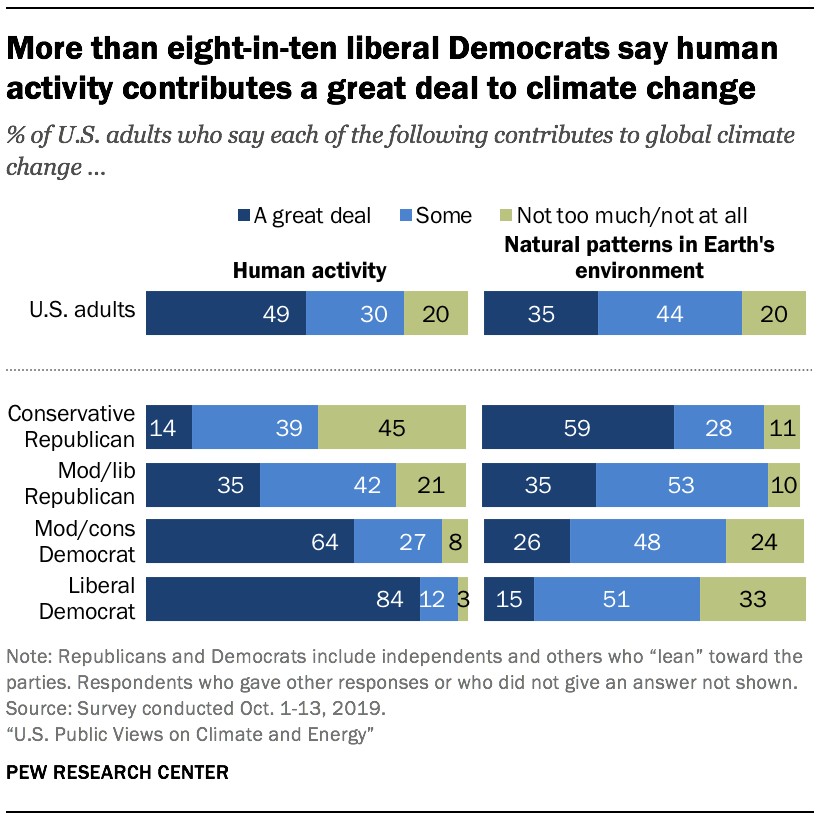 A robotic arm sorting recyclable materials in a waste management facility, showcasing the use of technology in waste reduction
A robotic arm sorting recyclable materials in a waste management facility, showcasing the use of technology in waste reduction
8. What Policies Can Be Implemented to Reduce Plastic Waste Effectively?
Effective policies for reducing plastic waste should address the entire life cycle of plastics, from production to disposal. This includes measures such as:
- Bans on single-use plastics: Banning certain types of single-use plastics, such as plastic bags, straws, and cutlery.
- Extended producer responsibility (EPR) schemes: Requiring producers to take responsibility for the end-of-life management of their products, including plastic packaging.
- Deposit refund schemes: Implementing deposit refund schemes for plastic bottles and other containers, incentivizing consumers to return them for recycling.
- Taxes on plastic production and consumption: Imposing taxes on the production and consumption of plastics to discourage their use.
- Investment in waste management infrastructure: Investing in waste management infrastructure, such as recycling facilities and composting facilities.
These policies should be implemented in a coordinated and comprehensive manner to maximize their effectiveness.
8.1. What Are the Advantages and Disadvantages of Banning Single-Use Plastics?
Banning single-use plastics offers several advantages, including:
- Reduced plastic waste: Bans can significantly reduce the amount of plastic waste generated.
- Increased use of alternatives: Bans can encourage the use of reusable and sustainable alternatives to plastic.
- Increased awareness: Bans can raise awareness about the problem of plastic pollution and the need for sustainable practices.
However, bans also have some disadvantages, including:
- Inconvenience for consumers: Bans can be inconvenient for consumers who are used to using single-use plastics.
- Economic impacts on businesses: Bans can have economic impacts on businesses that produce or sell single-use plastics.
- Enforcement challenges: Enforcing bans can be challenging, especially in areas with limited resources.
These advantages and disadvantages should be carefully considered when implementing bans on single-use plastics.
8.2. How Can Extended Producer Responsibility (EPR) Schemes Reduce Plastic Waste?
Extended producer responsibility (EPR) schemes can reduce plastic waste by:
- Incentivizing producers to design more sustainable products: EPR schemes can incentivize producers to design products that are easier to recycle, contain less plastic, and are made from recycled materials.
- Funding waste management infrastructure: EPR schemes can provide funding for waste management infrastructure, such as recycling facilities and composting facilities.
- Increasing recycling rates: EPR schemes can increase recycling rates by making producers responsible for the end-of-life management of their products.
EPR schemes can be an effective tool for promoting a circular economy for plastics, where products are designed to be reused, recycled, or composted.
8.3. What Are the Benefits of Implementing Deposit Refund Schemes?
Implementing deposit refund schemes for plastic bottles and other containers offers several benefits, including:
- Increased collection rates: Deposit refund schemes can significantly increase the collection rates of plastic bottles and other containers, as consumers are incentivized to return them for a refund.
- Reduced litter: Deposit refund schemes can reduce litter by making it more valuable for consumers to return containers for recycling.
- Improved quality of recyclables: Deposit refund schemes can improve the quality of recyclables by reducing contamination, as containers are collected separately from other waste.
Deposit refund schemes can be an effective way to promote recycling and reduce plastic waste.
8.4. How Can Taxes on Plastic Production and Consumption Reduce Plastic Waste?
Taxes on plastic production and consumption can reduce plastic waste by:
- Discouraging the use of plastics: Taxes can make plastics more expensive, discouraging their use and encouraging the use of alternatives.
- Generating revenue for waste management: Taxes can generate revenue that can be used to fund waste management infrastructure and programs.
- Promoting sustainable practices: Taxes can send a signal to consumers and businesses that plastic waste is a problem and that sustainable practices are needed.
Taxes should be carefully designed to avoid unintended consequences, such as shifting consumption to other environmentally harmful products.
 A government official discussing new policies on plastic waste reduction with local business owners, promoting collaboration
A government official discussing new policies on plastic waste reduction with local business owners, promoting collaboration
9. What Is SIXT.VN Doing to Promote Sustainable Tourism in Vietnam?
SIXT.VN is committed to promoting sustainable tourism in Vietnam by implementing responsible environmental practices, supporting local communities, and educating travelers about sustainable travel. We offer eco-friendly transportation options, promote responsible tour activities, and encourage travelers to minimize their environmental impact during their visit. By partnering with local organizations and communities, SIXT.VN aims to contribute to the long-term sustainability of Vietnam’s tourism industry.
9.1. What Eco-Friendly Transportation Options Does SIXT.VN Offer?
SIXT.VN offers a range of eco-friendly transportation options to help travelers reduce their environmental impact, including:
- Hybrid and electric vehicles: We offer a selection of hybrid and electric vehicles for rent, which produce fewer emissions than traditional gasoline-powered vehicles.
- Bicycle rentals: We provide bicycle rentals for travelers who want to explore cities and natural areas in a sustainable way.
- Public transportation information: We provide information on public transportation options, such as buses and trains, to encourage travelers to use these modes of transportation instead of driving.
- Carbon offsetting programs: We offer carbon offsetting programs that allow travelers to offset the emissions from their transportation by investing in environmental projects.
These options help travelers reduce their carbon footprint and contribute to a cleaner environment.
9.2. How Does SIXT.VN Support Local Communities?
SIXT.VN supports local communities by:
- Partnering with local businesses: We partner with local businesses, such as hotels, restaurants, and tour operators, to promote sustainable tourism and support the local economy.
- Promoting community-based tourism: We promote community-based tourism initiatives, which allow travelers to experience local culture and support community development.
- Donating to local environmental organizations: We donate a portion of our profits to local environmental organizations that are working to protect Vietnam’s natural resources.
- Employing local staff: We prioritize hiring local staff, providing employment opportunities and supporting local families.
These efforts help ensure that tourism benefits local communities and contributes to their long-term well-being.
9.3. What Responsible Tour Activities Does SIXT.VN Promote?
SIXT.VN promotes responsible tour activities that minimize environmental impact and support local communities, including:
- Eco-tours: We offer eco-tours that focus on exploring natural areas in a sustainable way, with knowledgeable guides who educate travelers about the environment.
- Cultural tours: We promote cultural tours that respect local customs and traditions and support local artisans and craftspeople.
- Volunteer tourism: We offer volunteer tourism opportunities that allow travelers to contribute to local community development projects.
- Responsible wildlife tourism: We promote responsible wildlife tourism practices that protect animals and their habitats.
These activities help travelers experience Vietnam in a sustainable and responsible way.
9.4. How Does SIXT.VN Educate Travelers About Sustainable Travel?
SIXT.VN educates travelers about sustainable travel through:
- Providing information on our website and in our brochures: We provide information on our website and in our brochures about sustainable travel practices, such as reducing plastic waste, conserving water and energy, and respecting local culture.
- Training our staff: We train our staff to be knowledgeable about sustainable travel and to provide advice to travelers.
- Partnering with environmental organizations: We partner with environmental organizations to develop and promote sustainable travel initiatives.
- Supporting sustainable travel campaigns: We support sustainable travel campaigns, such as the “Travel Greener” campaign, to raise awareness about the importance of sustainable travel.
These efforts help travelers make informed decisions about their travel choices and contribute to a more sustainable tourism industry.
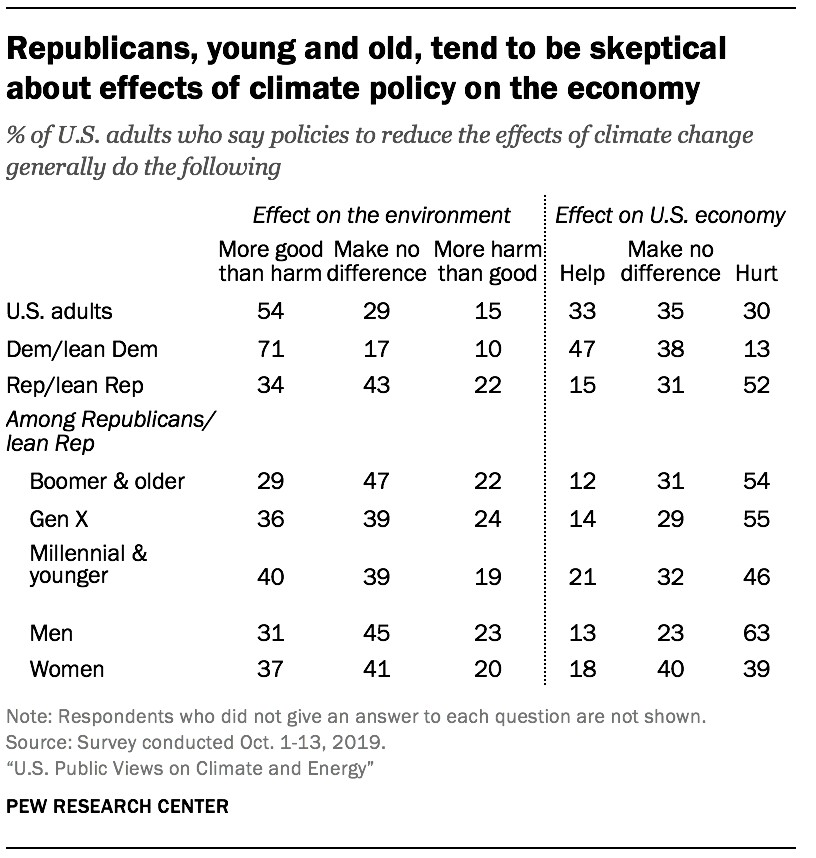 A SIXT.VN electric car rental, promoting eco-friendly transportation for tourists in Vietnam
A SIXT.VN electric car rental, promoting eco-friendly transportation for tourists in Vietnam
10. How Can You Contribute to Reducing Plastic Waste While Traveling in Vietnam with SIXT.VN?
As a traveler, you can make a significant difference in reducing plastic waste while visiting Vietnam. Here are some simple steps you can take with SIXT.VN:
- Choose eco-friendly transportation: Opt for hybrid or electric vehicle rentals from SIXT.VN to reduce your carbon footprint.
- Pack reusable items: Bring your own reusable water bottle, shopping bags, and utensils.
- Say no to single-use plastics: Politely decline plastic straws, bags, and other single-use items.
- Support sustainable businesses: Choose hotels, restaurants, and tour operators that are committed to reducing plastic waste, many of which you can find through SIXT.VN’s partners.
- Participate in local cleanup efforts: Join beach cleanups or other community events to help remove plastic waste.
- Educate yourself and others: Learn about the local environmental issues and share your knowledge with fellow travelers.
- Book responsible tours: Select tours offered by SIXT.VN that focus on sustainable practices and support local communities.
By making conscious choices and adopting sustainable habits, you can help protect Vietnam’s beautiful environment and contribute to a more responsible tourism industry.
Ready to plan your eco-friendly adventure in Vietnam? Let SIXT.VN help you create a sustainable and unforgettable travel experience! Visit our website or contact us today to learn more about our services and how you can contribute to responsible tourism.
Address: 260 Cau Giay, Hanoi, Vietnam
Hotline/Whatsapp: +84 986 244 358
Website: SIXT.VN
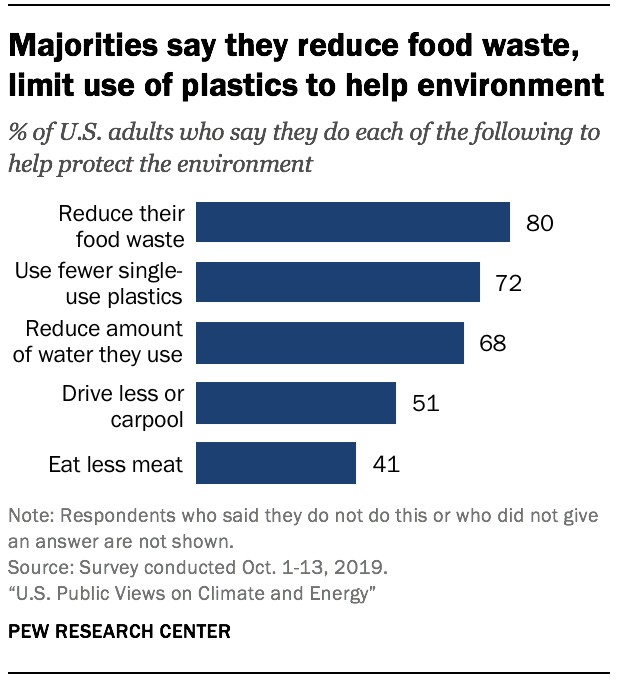 A happy tourist using a reusable water bottle during a SIXT.VN tour, promoting eco-friendly travel habits
A happy tourist using a reusable water bottle during a SIXT.VN tour, promoting eco-friendly travel habits
FAQ: Local Views on Environmental Issues Like Plastic Waste in Vietnam
1. What are the most pressing environmental issues in Vietnam?
Vietnam faces several environmental challenges, including plastic waste, air pollution, water contamination, deforestation, and biodiversity loss. Plastic waste is particularly concerning due to the country’s rapid economic growth and urbanization.
2. How aware are Vietnamese people of the impact of plastic waste?
Awareness is growing due to media campaigns and educational programs. Many are aware of the detrimental effects on marine ecosystems and human health, but gaps in knowledge still exist.
3. What are the main concerns Vietnamese people have about plastic pollution?
Concerns include the impact on natural landscapes, marine life health, and the safety of food and water sources. Visible accumulation of plastic waste is also a major worry.
4. What kind of government regulations are in place to reduce plastic waste in Vietnam?
The government has implemented policies such as the National Strategy on Integrated Solid Waste Management and Decree No. 08/2022/ND-CP, which provide regulations on waste management and plastic waste.
5. What role do private sector companies play in reducing plastic waste in Vietnam?
Private sector companies are investing in innovative solutions for plastic recycling, developing alternative materials, and promoting sustainable packaging.
6. What community-based initiatives are addressing plastic waste in Vietnam?
Community-based initiatives include beach cleanups, waste segregation programs, and educational programs to promote responsible waste management practices.
7. How does plastic waste impact tourism in Vietnam?
Plastic waste detracts from the country’s beauty, harms marine life, and can deter tourists, impacting the tourism industry’s reputation and revenue.
8. What can tourists do to minimize their plastic footprint in Vietnam?
Tourists can bring reusable water bottles and shopping bags, refuse single-use plastics, support sustainable businesses, and participate in beach



